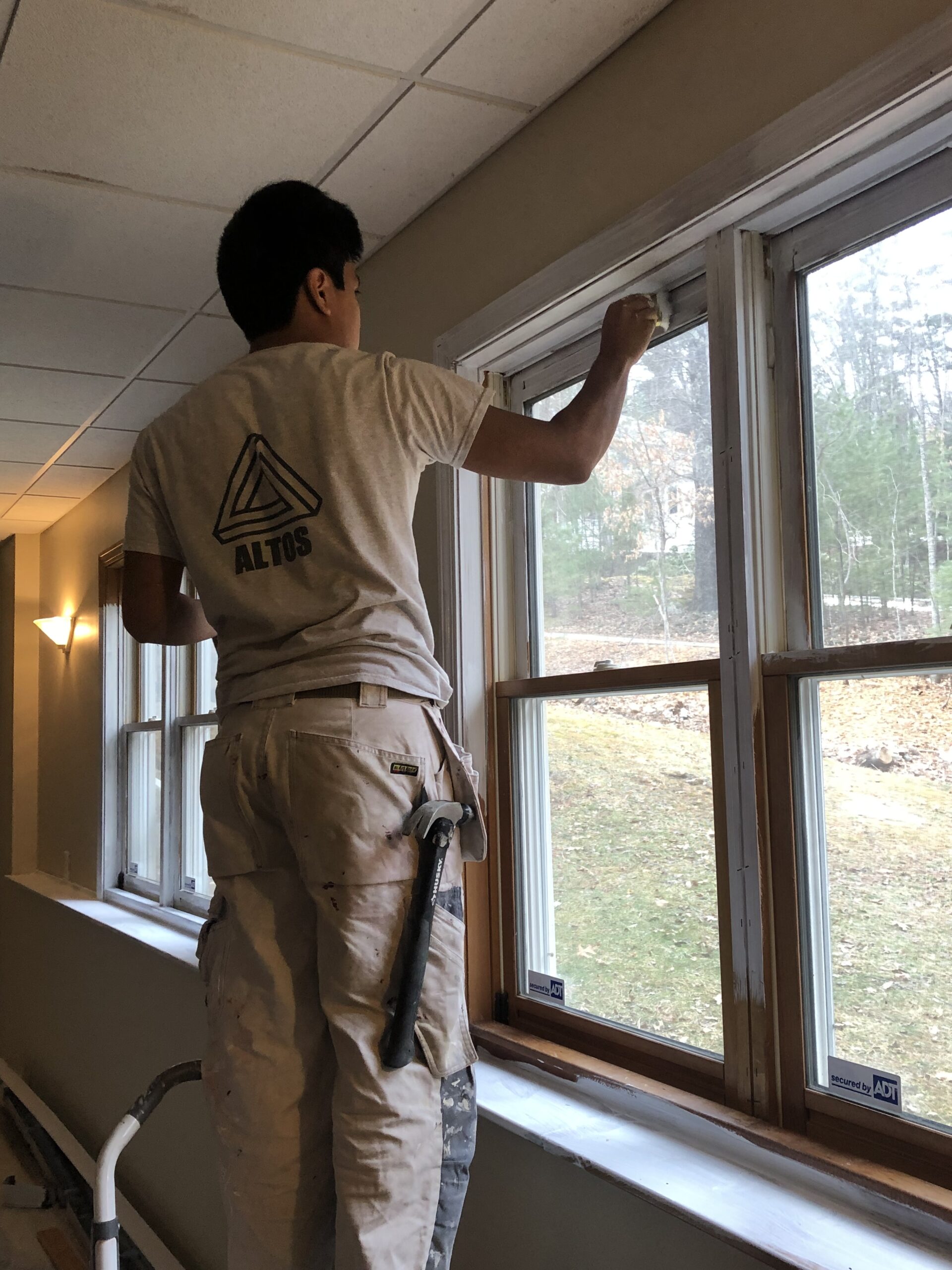One of the terms you might frequently encounter when working with paint is “VOC”, which stands for “Volatile Organic Compounds.” These are organic chemicals that have a high vapor pressure at room temperature. The presence of VOCs in paint and their potential effects have been topics of interest for both construction professionals and environmentally-conscious consumers. This article delves into the nature of VOCs in construction paint and how they might influence different paint jobs. If you have any questions about VOC and how it affects your paint job, ask your local painting contractor!
What are VOCs?
Volatile Organic Compounds, or VOCs, are a group of carbon-based chemicals that easily evaporate at room temperature. They are found in many household and industrial products, including paints, solvents, and cleaners, VOCs often contribute to the characteristic smell of these products.
In the context of paint, VOCs are typically used as solvents that keep the paint in liquid form until it is applied. Once the paint is spread on a surface, these solvents evaporate, allowing the paint to dry and harden.
The Concern with VOCs
Several concerns surround the use of high-VOC paints:
1. Environmental Impact: VOCs contribute to the formation of ground-level ozone, a significant component of smog. Elevated levels of smog can be harmful to the environment, affecting both vegetation and wildlife. This is especially important to consider when doing large exterior paint jobs.
2. Health Concerns: High concentrations of VOCs can be harmful to human health. Short-term exposure can lead to eye, nose, and throat irritation, headaches, and even nausea. Prolonged exposure, especially in poorly ventilated areas, can have more severe health consequences, including damage to the liver, kidneys, and central nervous system. Some VOCs have also been identified as potential carcinogens. It is important that you use proper protection for both your hands, eyes, and lungs when necessary. It isn’t uncommon for painters to wear masks or respirators, especially when using sprayers.
3. Paint Performance: High VOC content can influence the drying time of the paint. While this can sometimes be an advantage for specific jobs that require rapid drying, it can also lead to issues like uneven drying or the formation of skin on the paint’s surface.
How VOCs Affect Different Paint Jobs
The VOC content in the paint can influence a paint job in several ways:
1. Indoor vs. Outdoor Painting: VOCs are often more of an immediate concern for indoor painting projects. Enclosed spaces can trap these compounds, leading to a strong odor and potential health risks due to prolonged exposure. While this odor normally doesn’t linger for a few hours, it is important to be aware of the strong odor high VOC paints can produce. Outdoor projects generally allow VOCs to dissipate more quickly, reducing potential hazards. However, the environmental impact remains a concern.
2. Drying Time: As mentioned, paints with a high VOC content tend to dry faster. This can be a double-edged sword. On one hand, for projects with tight timelines, these paints can be advantageous. On the other, they might not be suitable for large projects where the paint could start to dry before an entire section is completed, leading to visible brush or roller marks.
3. Finish Quality: High-VOC paints often provide a smooth, high-gloss finish which can be desirable in certain settings. However, they might not be as durable or resistant to wear and tear as some low-VOC alternatives.
4. Adhesion and Coverage: Paints with different VOC levels can vary in their adherence properties. While many modern low-VOC paints have been formulated to offer excellent adhesion and coverage, some might require multiple coats to achieve the desired opacity and finish, potentially influencing labor and cost.
The Rise of Low-VOC and No-VOC Paints
With the increasing awareness of the potential drawbacks of high-VOC paints, many manufacturers have developed low-VOC and even no-VOC alternatives. These paints aim to provide the benefits of traditional paints while minimizing health and environmental concerns.
It’s essential, however, to note that “low VOC” doesn’t mean the absence of VOCs. It simply indicates a reduced amount compared to traditional formulations. As such, users should still ensure proper ventilation when using these products.
Conclusion
VOCs in construction paint are a crucial consideration for professionals, homeowners, and environmental advocates. Being aware of the VOC content in paint and its potential effects allows for informed decisions that balance performance needs with health and environmental considerations. As the painting industry continues to evolve, we’ll likely see even more innovations aimed at reducing the impact of VOCs while delivering high-quality results.
Contact ALTOS Painting & Renovation
Revitalize your home or property with a stunning new paint makeover, and there’s no need to search any longer – ALTOS Painting & Renovation is your go-to local destination for top-tier painting expertise, proudly catering to homeowners and property managers throughout the enchanting regions of New Hampshire and Northern Massachusetts.



In addition to our painting services, we also offer a range of renovation services, including drywall repair, wallpaper removal, and more. Whatever your home improvement needs may be, we have the skills and expertise to get the job done right.
Services
So why wait? Contact ALTOS Painting & Renovation (603) 259-4350 or info@altosnh.com today to schedule a free consultation and estimate for your next painting or renovation project. Let us help you transform your living spaces into the home of your dreams!


